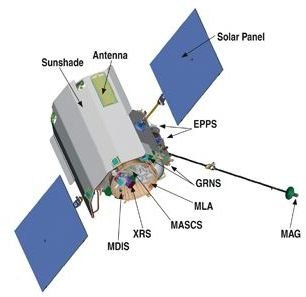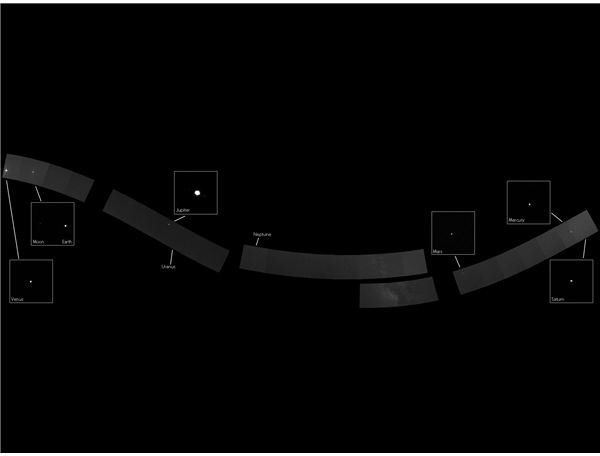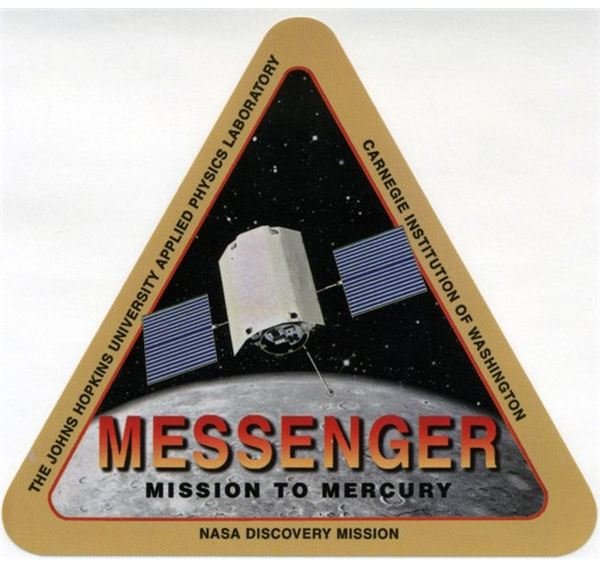Information and Details on MESSENGER's Mission to Mercury
Mission of MESSENGER
MESSENGER (acronym for MErcury Surface, Space ENvironment, GEochemistry and Ranging) is a spacecraft launched by NASA in 2004 with the mission to study the surface (topography), chemical composition, magnetic field and a number of other characteristics of Mercury. During the mission, MESSENGER will also gather valuable information regarding Venus and the interplanetary space.
Mariner 10 was the first space probe to study Mercury in 1974, however MESSENGER is the first spacecraft to orbit the planet (March 2011_)._
_
Basic Characteristics of the Spacecraft Design
- Designed by: Applied Physics Laboratory, Johns Hopkins University (with the contribution of companies and research institutions across the world)
- Dimensions of the bus: 1.85 x 1.42 x 1.27 meters
- Dimensions of the sunshade: 2.5 x 2 meters
- Mass: 485 kg
- Power: 450 W (Solar arrays and batteries)
- Highest temperature to endure: 370ºC (700ºF)
- Current total distance traveled: ~ 4,900,000,000 miles (~7.9-billion kilometers)
- Top Speed: ~140,000 miles per hour (over 225,300 kilometers per hour)
Timeline of Events During the Mission
Launch Date: 2004-08-03 06:15:56 UTC
Launch Location: Cape Canaveral Air Force Station in Florida
Encounter with Earth (2005-08-02): MESSENGER performed an Earth flyby giving the opportunity to image the Earth and Moon, and collect data on the Earth’s magnetosphere.
Encounter with Venus (2006-10-24): MESSENGER performed two flybys of Venus in October 2006 and June 2007 - the second at an altitude of 338 kilometers - before adjusting its trajectory towards Mercury.

Encounter with Mercury (2008-01-14): MESSENGER made three flybys around Mercury in January 2008, October 2008 and September 2009 - the closest distance between the spacecraft and the plant’s surface was 200 kilometers. The three flybys were performed in order to provide MESSENGER with the necessary velocity to enter into orbit around Mercury. During this time, the instruments onboard MESSENGER took images of the planet and performed all scheduled measurements.
Orbit around Mercury (2011-03-18): The spacecraft will enter a year-long orbital mission.

Scientific Instruments Onboard the MESSENGER
Apart from the necessary navigation, communication and other systems, the spacecraft is also equipped with 9 scientific instruments:
SPACECRAFT PARTS
- Propellant Tanks
- LVA Thruster
- Correction Thrusters
- Attitude Monitors
- Antennas
- Heat-resistant Sunshade
- Solar Panels

SCIENTIFIC INSTRUMENTS
Mercury Dual Imaging System (MDIS): This is the system that gathers topographic data to create images of the Mercury surface.
Gamma-Ray Spectrometer (GRS): This is a detector for neutrons, gamma rays and low-energy X-rays emitted by certain element on the planet’s surface. The instrument will help determine whether there is ice at the poles of the planet.
Neutron Spectrometer (NS): This spectrometer detects the low-energy neutrons emitted by the surface minerals (40cm depth) when hitted by cosmic rays and determines their composition.
X-Ray Spectrometer (XRS): Also determines the mineral composition - although at much lower depths (range of mm) - by detecting X-rays instead of neutrons.
Mercury Laser Altimeter (MLA): Another instrument that studies Mercury’s topography. This one uses a laser beam that is reflected by the planet’s surface and is used to collect topographic data.
Magnetometer (MAG): The purpose of this instrument is to map the magnetic field of Mercury and detect any magnetic materials on the surface.
Energetic Particle and Plasma Spectrometer (EPPS): It will measure the various characteristics of charged particles that exist in the planet’s magnetosphere (ions, electrons etc).
Mercury Atmospheric and Surface Composition Spectrometer (MASCS): The spectrometer will detect any gases in Mercury through the infrared to ultraviolet emission spectra of these gases.
Radio Science (RS): The instrument will study the mass distribution of the planet by monitoring the changes in speed of the spacecraft through the Doppler effect.
Where is MESSENGER Now?
MESSENGER is very close to Mercury now and on March 18, 2011, will enter into orbit around the planet. On February 18, 2011, MESSENGER completed a portrait of our Solar System depicting all planets except for Uranus and Neptune. This was made possible through the assembly of 34 images.

The probe has also made several other discoveries such as determining the existence of water in the planet’s exosphere and the existence of volcanoes on the surface.
The messenger.jhuapl.edu site offers the opportunity to see MESSENGER’s location in its current orbit, the full orbital path that MESSENGER has followed since launch, and the views of Earth and Mercury as they appear from the spacecraft’s perspective.
The images are not real. They are daily updated simulations created with the Satellite Tool Kit (STK). To see the images click here.
Sources:
Spacecraft Design https://www.nasa.gov/mission_pages/messenger/spacecraft/index.html
MESSENGER by messenger.jhuapl.edu
Image Credits:
- MESSENGER Mission Emblem: Wikimedia Commons
- nasaimages.org: “A View of Mercury”
- nasaimages.org: “Mercury Passes Venus”
- nasaimages.org: “Scientific Instruments on MESSENGER”
